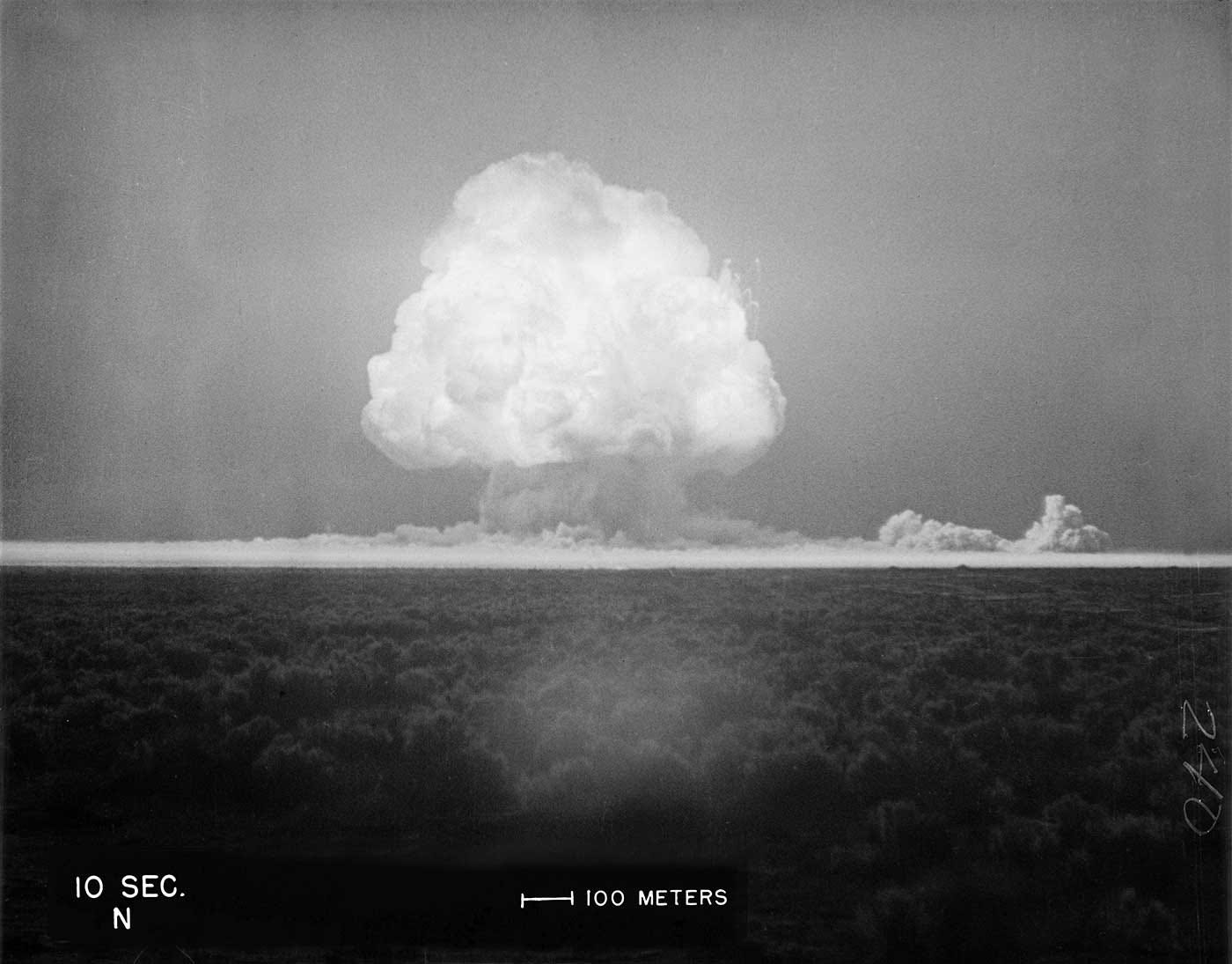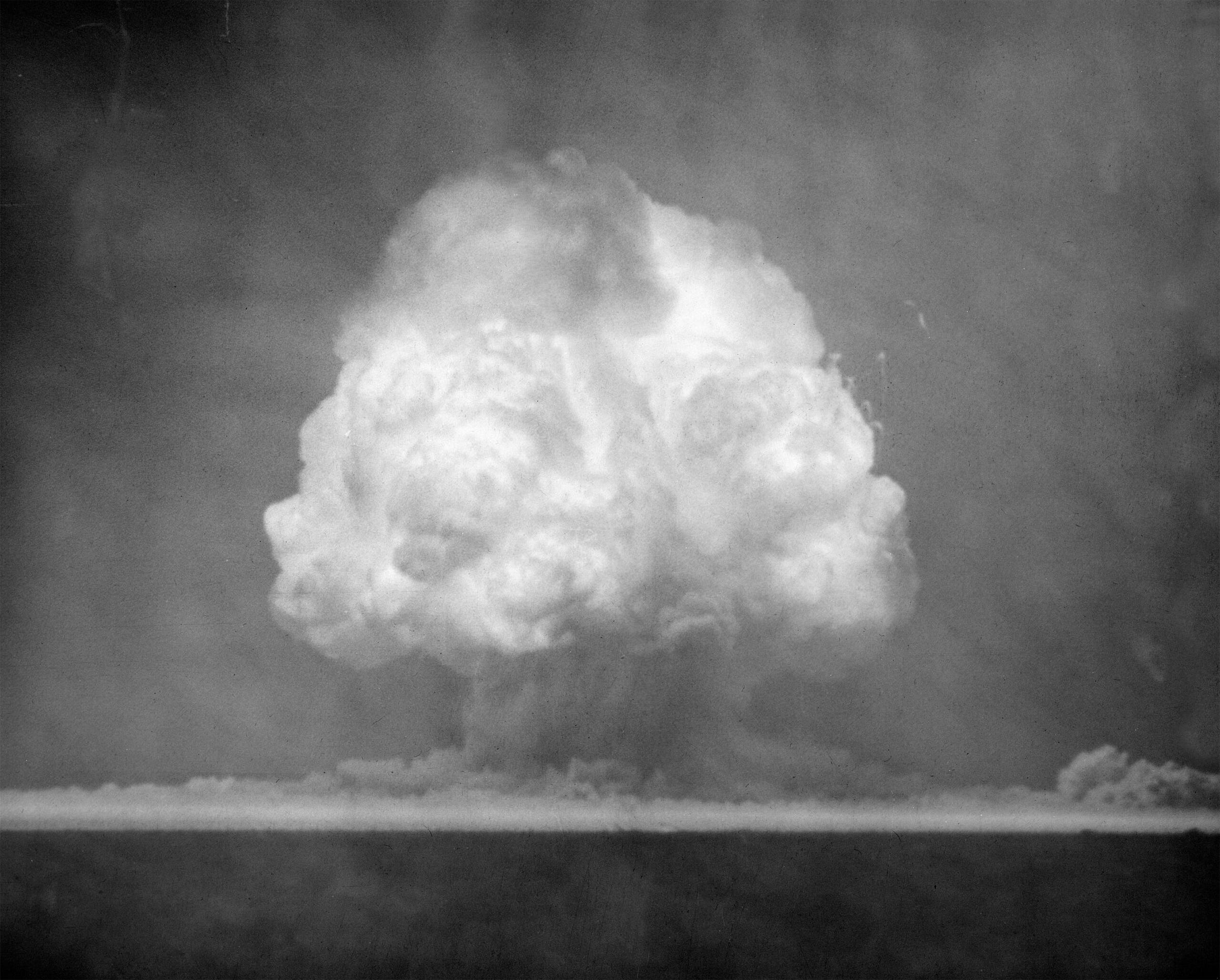The Only Color Photo of the First Nuclear Explosion
Jack Aeby, an amateur photographer with only four frames left in his camera, captured the dawn of the atomic age July 16, 1945.
“It was there, so I shot it.”
That’s how 21-year-old Jack Aeby described photographing the beginning of the end of the world — the first-ever detonation of a nuclear weapon.
Aeby was a civilian employee on the Manhattan Project, working under Nobel Prize-winning physicist Emilio Segrè. “I wasn’t a photographer, that wasn’t my job, except I did carry a camera ever since high school almost daily and of course I couldn’t anywhere around Los Alamos,” Aeby told the Voices of the Manhattan Project.
Thankfully, Segrè persuaded officials into allowing Aeby to photograph Trinity — the code name for the groundbreaking nuclear test coined by J. Robert Oppenheimer.
On the morning of July 16, 1945, in the Jornada del Muerto desert in New Mexico, Aeby propped up his Perfex 44 camera on the back of a chair, its lens aimed squarely at the detonation site.
“Film was hard to come by during the war,” Aeby recalled. He’d gotten his hands on some Anscochrome color film but had only four frames left by the time of the detonation. Aeby donned his government-issued welding goggles, not realizing they were cracked. He set his shutter to “bulb” and waited.
Suddenly, at 5:29 a.m., an explosion of light leaked through the crack in his goggles. “I released the shutter, cranked the diaphragm down, changed the shutter speed and fired three times in succession,” Aeby recalled in Craig Nelson’s The Age of Radiance. “I quit at three because I was out of film.”
Had Aeby not been temporarily blinded by the crack in his goggles, he wouldn’t have known to stop down (to f/22 or f/32) and the photos would have been overexposed, ruined.
“They were excellent pictures and were ready before the official pictures prepared by the photographic group of the laboratory,” Segrè wrote in his 1970 book, Enrico Fermi, Physicist. “Having scooped the official photographers, we went to Oppenheimer and gave him the pictures.”
“Other than the people at Los Alamos, the next three people who saw the picture were Winston Churchill, Stalin, and Harry Truman,” Aeby told NPR in 2005.
Jack Aeby died in 2015.
This is a medium format transparency of a print from Aeby’s original negative (notice the Eastman-Safety-Kodak edge markings). The crack in the film serendipitously echoes the crack in Aeby’s goggles.
Aeby's historic photo wasn’t released to the public until after Japan surrendered. It was first published in the October 7, 1945 edition of the New York Sunday Mirror, credited to “U.S. Army Color Photo, New Mexico,” even though Aeby was a civilian.
Notice anything different? The photo is flipped.
Aeby's photo was shot from Base Camp ten miles south of the detonation, whereas photos by Berlyn Brixner, the official photographer for the Manhattan Project, were taken from the north. Incredibly, Aeby's photo was often published flipped to align with Brixner's “official” photos.
Here’s another one of the flipped versions, often erroneously published with news articles.
The flipped versions of Aeby’s photo are easy to spot — just look for the small puff of smoke next to the mushroom cloud. If it’s on the left, it’s the original.
Berlyn Brixner was positioned closer to the blast, 5.68 miles away, and used fifty motion picture cameras from multiple positions that produced over 100,000 images of the Trinity test. This is one of the most haunting — notice the puff of smoke to the right of the mushroom cloud.
“I was temporarily blinded,” Brixner said after the detonation. “I saw this tremendous ball of fire, and it was rising. I was just spellbound! It all took place in absolute silence.”
I’m strangely drawn to this photo by Brixner — flawed but fascinating. The film appears to be burned by the blast.
While researching this story I stumbled upon these fascinating Manhattan Project ID badge photos of Jack Aeby, Berlyn Brixner and J. Robert Oppenheimer, taken by an unknown photographer.
Twenty one days after the Trinity Test, the United States dropped an atomic bomb on Hiroshima. Three days later, another atomic bomb fell on Nagasaki. Over 200,000 people were killed — the deadliest act of violence in human history.











Simultaneously beautiful and frightening.